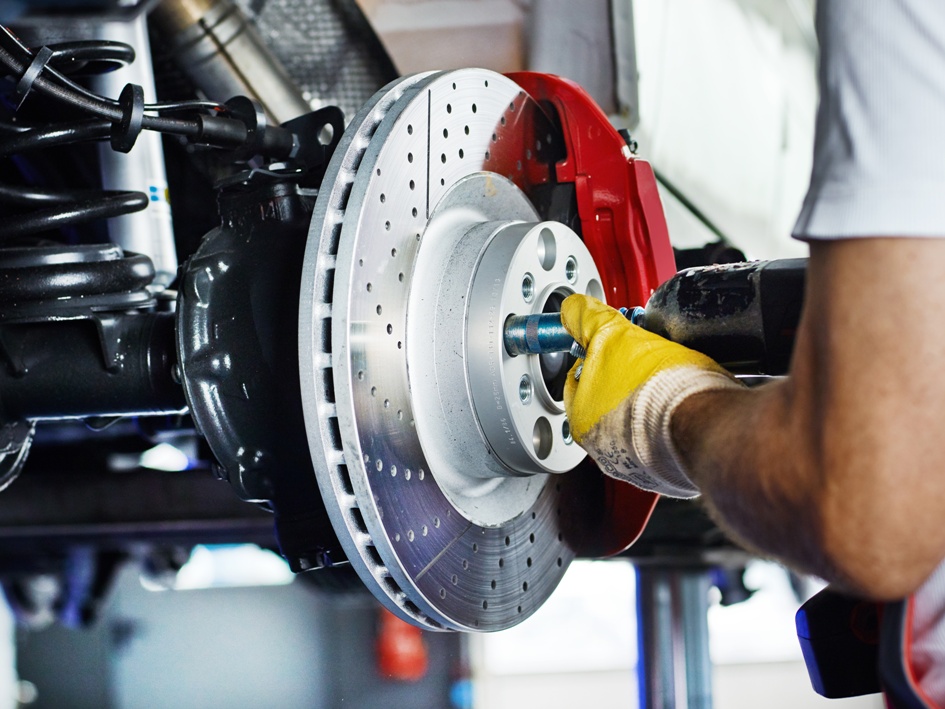
Knowing when to replace brake pads is crucial for maintaining the safety and performance of your vehicle. Brake pads are a vital component of the braking system that help stop your vehicle by creating friction against the brake rotors. Over time, brake pads wear down due to the constant contact and heat generated during braking. Here are some important factors to consider when determining the right time to replace your brake pads.

Also Read- BMW Service
- Thickness: Brake pads have a minimum recommended thickness, and it’s essential to monitor their thickness regularly. Most manufacturers provide specifications for the minimum thickness in the vehicle’s owner manual. You can also visually inspect the brake pads to assess their thickness. If the brake pads appear significantly thinner than when they were new, it’s likely time to replace them.
- Wear Indicators: Many brake pads have wear indicators built into them. These are small metal tabs that are designed to make contact with the brake rotor when the brake pads wear down to a certain level. When you hear a high-pitched squeaking or squealing noise during braking, it can indicate that the wear indicators are making contact with the rotor. This noise is a clear signal that your brake pads are due for replacement.
- Mileage: While mileage alone is not a definitive indicator of when to replace brake pads, it can provide a rough estimate. In general, brake pads can last anywhere from 30,000 to 70,000 miles, depending on driving habits, road conditions, and the quality of the brake pads. However, it’s essential to note that driving conditions and habits vary, so it’s best to inspect the brake pads regularly rather than relying solely on mileage.
- Brake Fluid Changes: Brake fluid plays a crucial role in the braking system, and regular maintenance, including brake fluid changes, is necessary. During a brake fluid change, it’s a good opportunity to inspect the condition of the brake pads. A mechanic can assess the thickness and condition of the pads and provide guidance on whether they need replacement.
- Brake Performance: If you notice a decrease in braking performance, such as a longer stopping distance or the need to apply more pressure on the brake pedal, it’s a sign that your brake pads may be worn. Reduced braking performance can compromise your safety on the road, so it’s important to have the brake pads inspected and replaced if necessary.
- Visual Inspection: Regularly inspecting your brake pads can provide valuable insights into their condition. You can visually examine the brake pads through the wheel spokes or by removing the wheel if necessary. Look for signs of excessive wear, uneven wear patterns, or any damage to the brake pads. If you are unsure about what to look for, consult a professional mechanic who can assist you.
- Warning Lights: Some vehicles are equipped with brake pad wear sensors that trigger a warning light on the dashboard when the brake pads are worn out. If you see the brake pad warning light illuminated, it’s a clear indication that the brake pads need immediate attention and replacement.
Also Read – Premium Cars Service Repair
It’s important to note that these factors are general guidelines, and the specific replacement interval for brake pads can vary depending on the vehicle make and model, driving conditions, and personal preferences. Always refer to the manufacturer’s recommendations and consult with a qualified mechanic if you have any doubts or concerns about the condition of your brake pads.
Remember, maintaining the integrity of your braking system is crucial for your safety and the safety of others on the road. Regular inspections, awareness of warning signs, and timely replacement of brake pads will help ensure optimal braking performance and peace of mind while driving.
Deepa is the Brand Manager of wheelforcecentre.








